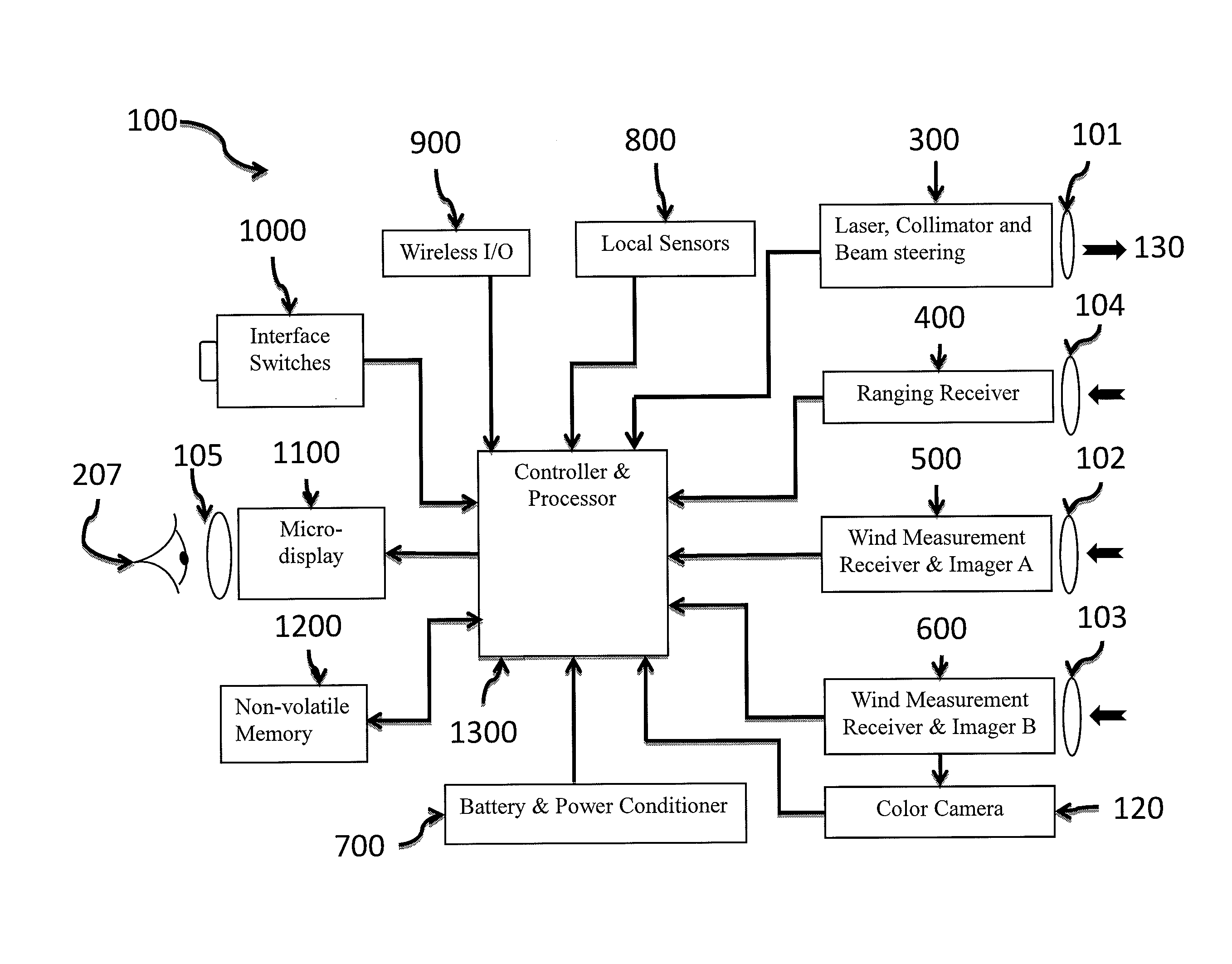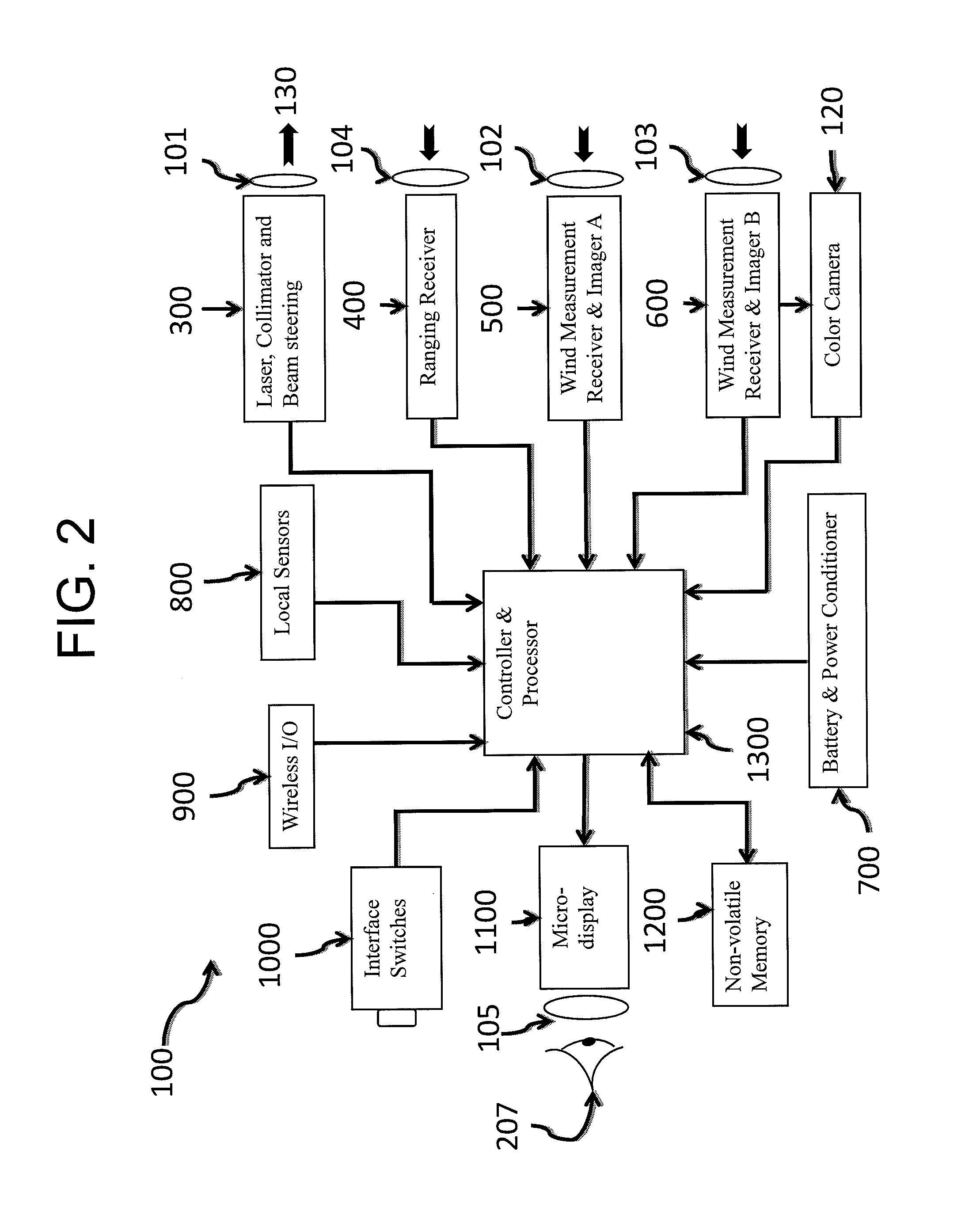Electro-optic system for crosswind measurement
a technology of optical system and crosswind measurement, which is applied in the direction of distance measurement, optical radiation measurement, radiation controlled devices, etc., can solve the problems of inability to conduct these functions, insufficient advancement, and difficulty in keeping on targ
- Summary
- Abstract
- Description
- Claims
- Application Information
AI Technical Summary
Benefits of technology
Problems solved by technology
Method used
Image
Examples
Embodiment Construction
[0035]An exemplary embodiment of a system, which is referred to hereinafter as the “XeroWind System” (or “XWS” for short), is designed for use as a replacement to the riflescope to not only measure the crosswind and range but also to provide an image of the target for acquisition and aiming. According to one alternate embodiment, however, the XWS may be configured as a clip-on so that the users may retain their direct-view riflescopes if desired. In another alternate embodiment, the XWS may be used as a standalone system mounted to a tripod for assisting a spotter. The system can measure the path-weighted average crosswind between the user and the target, the range to the target, and then, using the ammunition characteristics (mass, size, shape, muzzle velocity), atmospheric data and weapon angles, and other data, it calculates the azimuth and elevation offset aim points (OAP) to compensate for the wind deflection and ballistic drop of the ammunition used. The calculated offsets and...
PUM
 Login to View More
Login to View More Abstract
Description
Claims
Application Information
 Login to View More
Login to View More - R&D
- Intellectual Property
- Life Sciences
- Materials
- Tech Scout
- Unparalleled Data Quality
- Higher Quality Content
- 60% Fewer Hallucinations
Browse by: Latest US Patents, China's latest patents, Technical Efficacy Thesaurus, Application Domain, Technology Topic, Popular Technical Reports.
© 2025 PatSnap. All rights reserved.Legal|Privacy policy|Modern Slavery Act Transparency Statement|Sitemap|About US| Contact US: help@patsnap.com



